- Home
- Saul Tanpepper
Iceland: An International Thriller (The Flense Book 2) Page 21
Iceland: An International Thriller (The Flense Book 2) Read online
Page 21
"I am not part of any organization!" Angel shouted back.
"You are committed to telling the truth."
"And will you tell it to me? Or will you continue to lie, just as you have always done?"
"Rather than continue to fight you, we have decided to welcome you in, so you can see what it is we are doing. We think, once you have had a chance to witness all the good we have done, you will willingly join our fight."
"Never! You could never change my mind. And if you believe otherwise, you are just as deluded as Aston was."
The silence stretched on so long that Angel thought he'd left her. The image of Norstrom still filled the monitor before her. She could see his chest rising, the pulse in his neck, his eyes darting from side to side.
She knew that Kurtz had to be there in the same room with him, probably listening through an earpiece. Earlier, when he shouted, Norstrom had flinched.
Finally, Kurtz returned.
"It's your choice," he said, his voice once again calm, his words carefully measured. "You are free to go, if you so wish. I will deliver Mister Norstrom to your hotel."
The door buzzed and popped open, sending a shiver of trepidation through her. It was a trick, had to be.
Her eyes narrowed suspiciously, and she braced herself. But nothing came through it to attack her. She listened, yet heard nothing. The hallway beyond was silent.
She glanced at the monitor, then back to the door, and tried to figure out what she stood to gain and lose with each of those two choices.
In the end, she realized there was no choice at all. She couldn't leave. If she tried to, they'd surely kill Norstrom. They probably would anyway, regardless of what she did. Sure, they would deliver Norstrom to her, but only his body, and probably in pieces.
She even believed they intended to kill her as well. There was no reason she could think of to keep either of them around.
"Go. You are free to walk out," Kurtz repeated, as if taunting her. "Leave, and no one will harm you. But . . . I think you will find staying and hearing what I have to say well worth your while. You came for the truth, and so we are willing to give it."
She took a deep breath. Then, she slowly leaned back against the chair and crossed her arms over her chest.
"Good. Then we shall begin." The door clicked shut again on its own. "The first thing I'm going to do is to show you a movie."
Chapter Thirty Two
Angel didn't know what she expected to see, but it certainly wasn't a slick well-made marketing piece. In fact, as soon as she realized that that was what she was watching, she was furious. It seemed utterly preposterous that they would treat her so blithely after the horrific events of the past twenty-four hours and the cloak-and-dagger routine which followed it.
But then she began to grow afraid, because if they were at a point where they had something like this to show her, then they were close to launching a promotional campaign to commercialize the nanites. That is, if they hadn't already.
The video briefly summarized the various phases of the nanites' technical development, rapidly progressing from its concept to design to various demonstrations of efficacy in animal models— rabbits cured of tuberculosis, monkeys infected with simian immunodeficiency virus, and a sickening demonstration where cows were fed diets of brain matter from animals suffering from bovine spongiform encephalopathy yet never suffered the same fate as those animals they consumed, even when the nanites were administered weeks after the animal had been fed on the diseased flesh.
In all of the animal cases, the disease agent was completely eradicated, the damage repaired, and symptoms reversed.
Nevertheless, Angel remained unconvinced. She wanted to see the raw data. She wanted to know the details of the experiments. It was too easy to fake such claims.
Kurtz insisted that it was all true. He continued to assert that the nanites — or product, as he insisted on calling them — would change human medicine forever.
But for Angel, without proof, it was all just unfounded hand-waving, nothing she hadn't already previously heard from that madman Aston back in China. The longer the video proceeded, the thinner her patience grew. Did they actually believe they could change her mind through a smooth public relations campaign? Would they simply gloss over the massacres they had perpetrated?
And then she wondered, why? Why would they even bother trying to convince her — her, of all people! — that they were on the side of decency? Wouldn't killing her outright be easier, cleaner, less irksome?
They must need you alive.
Okay, but for what?
At one point, she realized she could have been recording the video with her cell phone. But then she realized they'd be monitoring her, and would know the moment she powered it up.
It was a moot point. The recording would not have been very incriminating had she managed to escape with it. The video was sparse on details. Nothing she saw was actually particularly identifiable; no faces were shown or signage which might be linked to any specific person or location.
Kurtz narrated all but one section, a pre-recorded clip by another man who described the creation of a new and highly streamlined programming language, which he called a biocode that, he explained, enabled the nanites to function efficiently as mechanical surrogates for enzymes.
"The human genome contains approximately one and a half gigabytes of information, but only one and a half percent of that encodes proteins and enzymes. Biocodes dispense with all that superfluous information, as well as provide us with a means to interact directly with the product via the mathematical language of supercomputers."
Angel didn't understand very much about this part of the presentation. Molecular and cellular biology were her forte, not biochemistry, and certainly not computer programming. But even if she had studied those areas, the details were insufficient to do much with. For example, no explanation was offered for how the tiny devices actually functioned to catalyze complex molecular reactions, much less do so in a manner akin to the tightly coordinated biofeedback mechanisms utilized by cells to regulate metabolic processes.
At last, there came the human experiments. The company, Kurtz explained, had initially sought approval for clinical trials and submitted paperwork through the official regulatory channels to the American Food and Drug Administration, but they withdrew the application when their proposal began to draw unwanted attention from other governmental agencies.
"In particular," he told her, "were alarming overtures from the Department of Defense that they were interested in the technology for troop augmentation. We had earlier suggested that the product might find use on the battlefield, but not to create supersoldiers capable of enhanced brutality, rather as a means to improve the survivability of combatants through more rapid and complete healing following trauma. Consequently, we withdrew our application and pursued clinical testing through other, more discrete, avenues."
"Through illegal testing, you mean."
"On the contrary. We received permission to proceed with the studies from several foreign states, along with assurances that they would not interfere during the experimentation phase."
"Governments?" She realized this must have been how Nordqvist became aware of the nanites' existence. Someone from one of the countries permitting the experimentation had passed along the information hoping to get their hands on the product before it was finished. "What other countries besides China?"
"Chili, Russia. Beyond that, I'm afraid I am not authorized to say, as those nations strictly forbid me from disseminating information regarding their involvement."
Angel snorted. "You are so naïve. Do you really believe any of those governments would simply wait while you test on their people? Do you not see how they might try to seize the technology and profit from it?"
"Why, when they would have complete access to limitless supplies soon enough? In exchange for providing us study participants, we promised to offer them and their citizens free access to the product when
it becomes ready for general distribution."
He flashed another image on the screen, this one a table. The columns and rows were labeled in alphanumeric code, making interpretation of its contents impossible.
"For our studies, we identified a number of high-risk populations, groups with significantly greater incidences of cancer, susceptibility to disease, injury, etcetera. The tests were of the highest caliber, tightly controlled, and highly specific. Product, placebo, or the best conventional method of treatment was administered using standard double-blind procedures. Each study participant was extensively monitored throughout the course of the trial. We accepted only individuals whose medical prognoses were already grim. Anyone familiar with the details would agree, we employed more rigor than any peer-review panel would have required."
He showed her a series of medical x-rays.
"These are the lungs of terminal coal miners in Chili, some of the test subjects in our first large-scale study. Pre-programmed product carrying the full complement of pulmonary biocodes was delivered directly into the lungs by trans-tracheal lavage, where they then redistributed organically to all areas of the lungs. The outcome was better than we ever expected. Within eleven weeks, one hundred percent of treated individuals showed complete recovery of respiratory function."
Angel studied the images as best as she could. She had to admit that the changes she saw between them were nothing short of miraculous— if they were true.
"Oh, they are authentic. And that's not all. As you know, it normally takes years for damaged lung tissue to be fully replaced with healthy. Not so in our case. We saw the transition from damaged to pristine tissue cut down to less than ten weeks."
"Whatever happened to these people? Why have I never heard about any of this?"
"They died. All of them, both the test and control subjects, just as we expected."
"I don't understand. You said—"
"It's because, in addition to lung disease, these people also suffered from various other debilitating conditions— kidney and liver damage, metastases in other tissues, immunological deficiencies. We targeted only the pulmonary system for this study. By the end of the trial, despite fully rehabilitated lungs, the subjects continued to ail as a result of their other medical problems. All subsequently died, not as a result of the treatment, but because the treatment was too specific."
"So, why did you not treat the other problems?"
"At the time, we couldn't. The panel of pulmonary biocodes was the very first we assembled for humans. The Chilean study was meant to ascertain feasibility of such work before we committed more effort to expanding the biocode database for other tissue types and diseases. Success in this study provided the green light to do so. In the ensuing months, similar studies were conducted for each new panel, focusing on a different tissue type, organ, or pathogen."
He forwarded to another video. The image showed a hospital ward with patients wrapped head to toe with cotton gauze, only their eyes showing.
"This is from our largest study to date, where we tested over one hundred individual tissue types or organs. The study involved close to twenty-five thousand individuals."
Angel gasped at the number.
"They were victims from the meltdown of the Rostovskaya power plant in Volgodonsk. In this case, we were able to completely reverse radiation damage in each of the tissues we targeted."
Angel remembered that event. Occurring a few years back, the meltdown had been triggered by an earthquake in the isthmus between the Black and Caspian Seas, causing the Tsimlyansk hydroelectric dam on the Don River to collapse, emptying the reservoir and starving the power plant of coolant. Hundreds of thousands of people had died that day, most from drowning, but also a significant number from exposure to radiation. That whole region was now a radiological wasteland.
In the following weeks, another hundred thousand suffered from terrible burns. Yet as horrific as that catastrophe was, the media coverage faded quickly, a victim of the constant churn of the news cycle and viewers ever hungry for the next bombing, refugee crisis, epidemic, natural disaster, and celebrity gossip. She hadn't heard a thing about it since.
"What happened to those people?" she asked. "Did they all die, too?"
"Yes, because we were still only treating one tissue at a time in any particular patient. As you might imagine, seeing such terrible suffering made us all the more eager to move onto the next phase of our work— testing multiple product types simultaneously."
"By administering different programmed nanites to different tissues?" she asked, remembering the boxes of differentiated nanites she had found in China.
"Would you like to guess how many different cell types there are in the human body?" he asked.
"A hundred?" She had probably once known the answer, when she was a medical student, but the figure eluded her now. The number she offered was based on the number of bottles she'd found within each box. She now knew that they would have each been programmed with a different type of biocode panel.
"Two hundred. And we had nearly twice that many different biocode panels when you include pathogens. But it's simply not feasible to administer four hundred different product types into a single person, as you may have already figured out, especially given that each type requires its own unique delivery method into its specific target tissue. If product programmed with lung biocode is improperly implanted into, say, the liver, you get—"
"Cancer," Angel said, remembering how the nanites programmed to generate rib bones had found their way to Jamie's belly from a wound in her leg.
"Exactly. We call it ectopic expression, like when a fertilized ovum implants outside of the uterus. It was our biggest challenge. We learned that very early on."
The video fast-forwarded again.
"We wondered, would it be possible to preload the product with multiple biocode panels, then make it so that only the proper one was utilized? Our engineers warned us that such specificity would be next to impossible to achieve. How would it work? And even if we could figure it out, it still wouldn't solve the delivery issues. Thankfully, they were wrong on both accounts."
The video stopped and began to play an animation of the human body with cartoon nanites distributing evenly to every part.
"As it turned out, a single solution eliminated both obstacles at once. A small modification in the product was made that enables it to sense specific chemical signatures unique to its cellular environment. These cues, or biomarkers, act as GPS coordinates. The biomarkers inform the product where they are in the body, what type of tissue they need to emulate, and, subsequently, which of the available programs to execute. For example, the chemical cues might tell the product, 'This is heart muscle, so you need to run cardiac biocode such-and-such.' It's really quite astonishing how accurate it is."
"So you preloaded all the biocodes into the nanites?"
"Initially, we started off with only two preloaded biocode panels in a single product. Then, when we got that to work, doubled it to four. Then again to eight. But then we hit a roadblock."
Another graphic appeared on the monitor, a series of colored bars of varying length, each one labeled with a different numeric code.
"This shows how much memory storage each biocode panel requires in the product. Unfortunately, being so small, they can only hold about seven megabytes of information, or roughly ten biocodes. Increasing the memory to hold four hundred would require physically enlarging the product to a point where they'd clog up in the vasculature and no longer be able to penetrate through the interstitial spaces between cells. Thankfully, the solution was once more a lot simpler than we initially realized."
A rather innocuous-looking object appeared on the screen, a small black box about the size and dimensions of a pack of gum.
"We had been using enhanced near-field communication to measure product activity and receive feedback from it in real time, using a small node module implanted subcutaneously to relay the information into a massive superco
mputer for analysis."
"And where is this supercomputer?"
"Again, I cannot answer that."
"Of course. So much for telling the truth."
"Standard NFC has a very short range, only a few centimeters. By modifying the signal, we increased communication between the product and the relay to a few feet, which is more than enough to make an external repository of our biocode database feasible. Such a library could be carried anywhere on the body — in a pocket, for example, or even implanted underneath the skin — and it can then be accessed from any individual product at any point inside the body."
Angel's mind raced as she tried to understand what he was saying. Once more, she was reminded of the resonance uncoupling device Aston had used to induce Jamie's altered mental state in China. It was the same device she had suspected of mediating the same effect on the refugees at Nordqvist's estate, although she now knew that the transmitter this time had been a cell phone instead.
"Yes," she said, "Aston showed me how it works, how you use it to turn a person into a . . . like a zombie. But I thought it simply interfered with the nanites in some electrical manner. Are you telling me that the nanites are capable of sending and receiving programs, too? That their function can be modified?"
"What you are referring to is known as a resonance uncoupler, and you are correct that it is a form of signal interference. But that device is not like the one I'm describing. We still don't fully understand how RU works to block brain activity, although extensive safety testing has proven that it's harmless and has no persistence effect once the signal is removed. It is completely reversible. And no one turns into a zombie. That's simply a erroneous characterization."
"Tell that to Stefan Nordqvist or any of the other scientists who died yesterday when those people turned into flesh-eating monsters."
Kurtz was silent for several seconds, and Angel wished she knew what he was thinking. But when he next spoke, his words and tone gave her no clue. He continued on with his presentation as if the horror she referenced had never occurred.

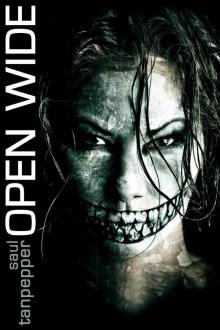 Open Wide
Open Wide Deep Into the Game: S.W. Tanpepper's GAMELAND (Episode 1) (Volume 1) (S. W. Tanpepper's GAMELAND)
Deep Into the Game: S.W. Tanpepper's GAMELAND (Episode 1) (Volume 1) (S. W. Tanpepper's GAMELAND)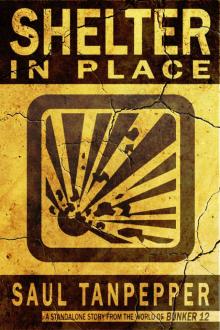 Shelter in Place: A short story from the world of BUNKER 12
Shelter in Place: A short story from the world of BUNKER 12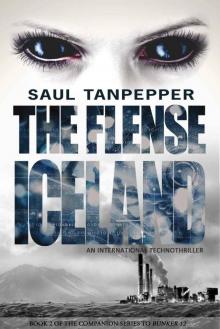 Iceland: An International Thriller (The Flense Book 2)
Iceland: An International Thriller (The Flense Book 2) GAMELAND Episodes 1-2: Deep Into the Game + Failsafe (S. W. Tanpepper's GAMELAND)
GAMELAND Episodes 1-2: Deep Into the Game + Failsafe (S. W. Tanpepper's GAMELAND)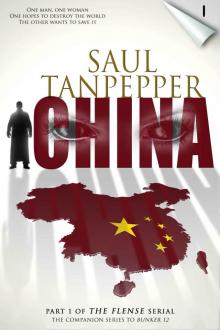 THE FLENSE: China: (Part 1 of THE FLENSE serial)
THE FLENSE: China: (Part 1 of THE FLENSE serial)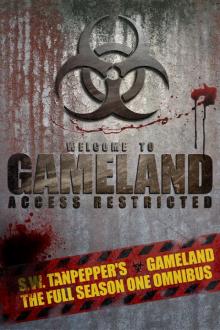 S.W. Tanpepper's GAMELAND, Season One Omnibus
S.W. Tanpepper's GAMELAND, Season One Omnibus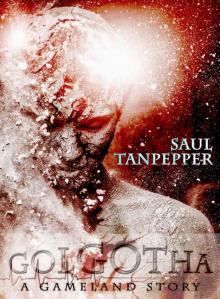 Golgotha: Prequel to S.W. Tanpepper's GAMELAND series (S. W. Tanpepper's GAMELAND companion title Book 1)
Golgotha: Prequel to S.W. Tanpepper's GAMELAND series (S. W. Tanpepper's GAMELAND companion title Book 1)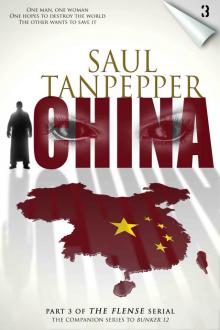 THE FLENSE: China: (Part 3 of THE FLENSE serial)
THE FLENSE: China: (Part 3 of THE FLENSE serial)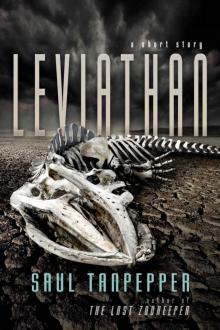 Leviathan: A Short Story About the End of the World
Leviathan: A Short Story About the End of the World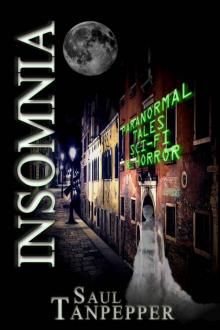 Insomnia: Paranormal Tales, Science Fiction, & Horror
Insomnia: Paranormal Tales, Science Fiction, & Horror Velveteen
Velveteen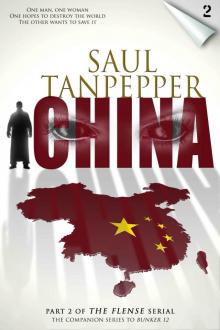 THE FLENSE: China: (Part 2 of THE FLENSE serial)
THE FLENSE: China: (Part 2 of THE FLENSE serial)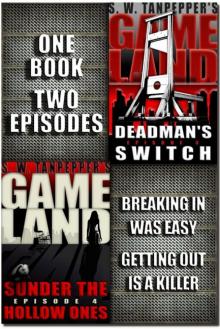 Deadman's Switch & Sunder the Hollow Ones
Deadman's Switch & Sunder the Hollow Ones